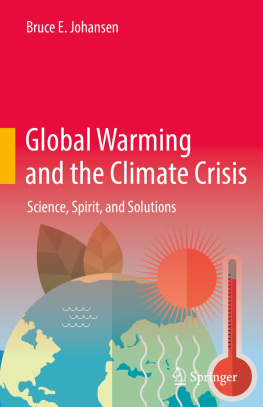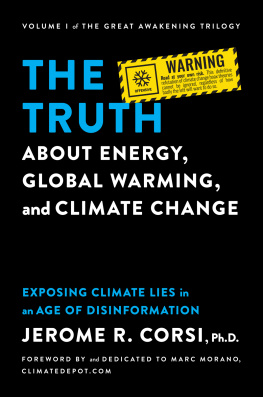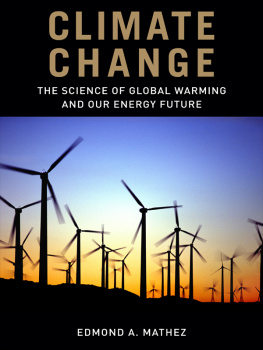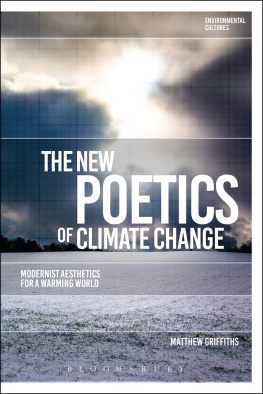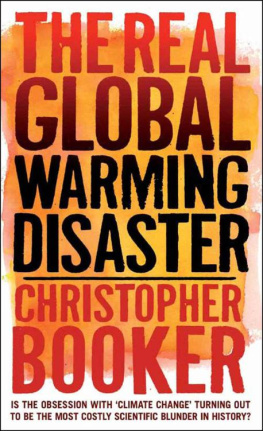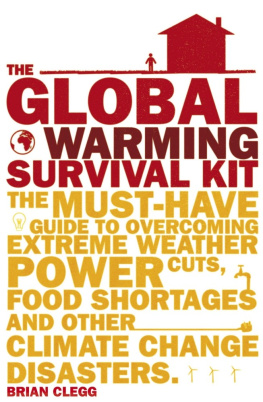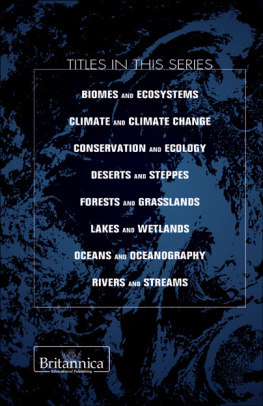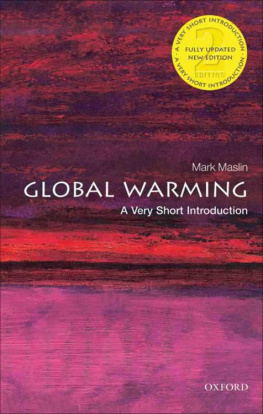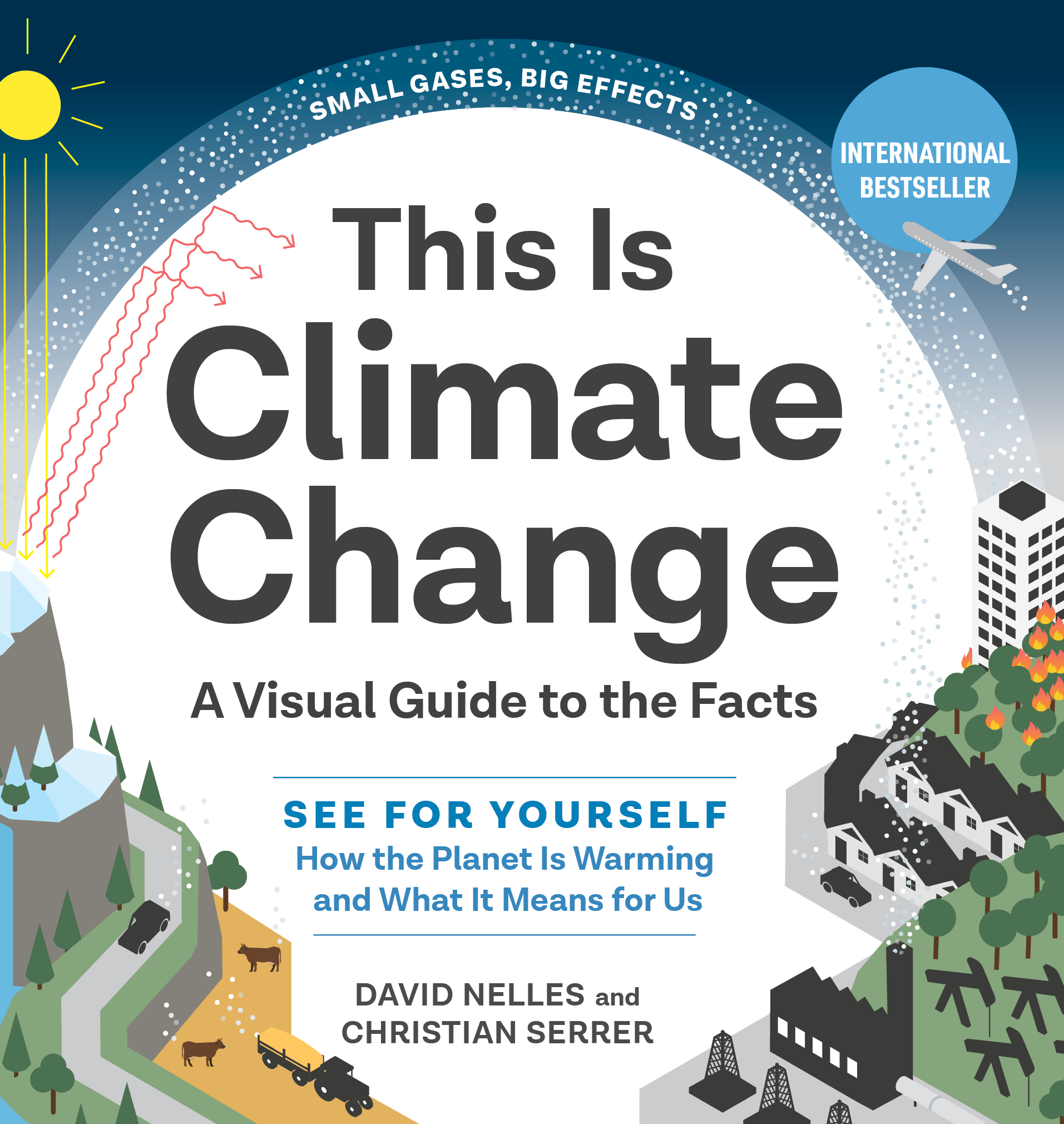
HOW TO READ THIS BOOK
Superscript numbers at the end of sentences (for example, ) are source references. We explain in the how to find the references cited.
Numbers in a circle (for example, ) link the text with the graphics on the page, and appear within the text wherever is appropriate.
Tip: double tap on images and infographics to pan and zoom.
THE EARTHS CLIMATE
Climate History
The climate has changed constantly over the course of Earths history, with regularly occurring extremes. One example is the Sturtian ice age, a glaciation triggered some 700 million years ago by a drop in solar radiation and a low concentration of carbon dioxide in the atmosphere . With the cooling effect intensified by ice-albedo feedback (p. 52), vast swathes of Earths surface froze over, turning our planet into a Snowball Earth.
Around 250 million years ago, large quantities of carbon dioxide (CO) and methane (CH) were released into the atmosphere . This resulted in an intensification of the greenhouse effect and a sharp rise in temperature. The oceans became more acidic as they absorbed a portion of the CO emissions (p. 68). 3,4,5 About 90 percent of all species living at that time became extinct. Over the last 11,500 years, Earths climate has been relatively stable , a factor that has allowed for the development of modern civilization.

Source: Schnwiese (2013)
Schematic representation of the average surface air temperature (SAT) in the north hemisphere. Note on the illustration: The timescale is consistent with each time period.
POSSIBLE CAUSES OF CLIMATE CHANGE
Other Evidence of Human Influence
Satellites have allowed scientists to measure how much thermal radiation from Earths surface is released back into space. These measurements show that, since 1970, less and less of the radiation that greenhouse gases can absorb has been released back into space. This is because the rise in greenhouse gas concentrations increasingly prevents thermal radiation from leaving the atmosphere . Other observations show that more thermal radiation is being reflected back onto Earths surface . 2,3 As such, the troposphere (lower atmosphere) has been warming, while the stratosphere (the next atmospheric layer up) has demonstrably cooled .

The observational evidence demonstrates and confirms the theory that climate change today is a human-made phenomenon. Furthermore, climate model simulations have shown that the recorded rise in temperature cannot be explained without the influence of humans .

The Cryosphere
Other Consequences of Thawing Permafrost

Permafrost is structurally stable thanks to its frozen water content. When it thaws, the subsoil becomes unstable, which can cause damage to infrastructure such as buildings, pipelines, or the transport network. 1,2 Destabilized ground can also trigger landslides. Permafrost in mountainous regions (like the Alps) has a stabilizing effect on rock faces; here, thawing increases the risk of rockfall.
The combination of thawing permafrost and diminishing sea ice and the increase in air and sea temperatures might lead to increased coastal erosion. 1,5 This process is happening now, averaging a loss of 1.6 feet (0.5 m) per year, although there is a lot of variation. For example, on some parts of the coast of Alaska, the land is being eroded at an average rate of 44.3 feet (13.5 m) per year.
THE OCEANS
Changes in Oceanic Circulation
The Atlantic Meridional Overturning Circulation (AMOC) is a part of the global conveyor belt (p. 16). Together with the Gulf Stream and the North Atlantic Current , it transports large quantities of heat from the tropics to the North Atlantic, thereby helping to maintain the moderate climate in northwest Europe. The warm, salt-rich surface water flowing north releases its heat into the atmosphere in the North Atlantic. This leaves the seawater cooler and denser, causing it to sink and then flow back southward in the deep ocean. In the south, different water masses combine in the deep ocean, which, helped by surface winds, brings the deeper water back to the surface. The AMOC cycle can then begin again.
As climate change progresses, Greenlands ice sheet continues to melt (p. 56). Because the meltwater is low in salt content, it reduces the density of the surface water in the North Atlantic. This could mean that the water masses from the south will no longer sink deep enough to be transported back, potentially weakening the AMOC cycle. So far, there is no clear indication that this is happening, but model simulations show that the AMOC could weaken by between 11 percent and 34 percent by the end of the twenty-first century, due to the increase in human-made greenhouse gas emissions. 6,7,8 This may have consequences on both sides of the Atlantic, from rising sea levels and more hurricanes on the East Coast of the US 9,10 to a change in wind circulation patterns and, consequently, more severe storms in Europe.

warm surface currents
cold deep water currents
WEATHER AND CLIMATE EXTREMES
Thunderstorms
Thunderstorms often come accompanied by extreme weather phenomena such as heavy rainfall, hail, strong winds, or tornadoes. They can cause billions of dollars worth of damage. 1,2,3
Thunderstorms are formed by a combination of factors. All thunderstorms require three conditions before they can develop: sufficient moisture, unstable air masses, and a lifting mechanism triggering the air to rise. Severe thunderstorms additionally require substantial changes among stacked horizontal air currents, whose wind direction and/or speed varies with altitude (vertical wind shear). In particular, rising, warm, and humid air plays a vital role in supplying the energy needed for thunderstorms to form. The water vapor it contains condenses at high altitudes, thereby releasing thermal energy and thus boosting the thunderstorm formation process. As the air gets warmer with climate change, and can therefore hold more moisture, more energy can be released when it condenses. We can expect an increase in the number and intensity of thunderstorms. 7,8 Given the variety of factors influencing thunderstorm formation and insufficient data on thunderstorms worldwide, it is difficult to generalize about global trends. It is easier to forecast locally.

Source: Munich Re NatCatSERVICE 2018
Annual losses from thunderstorms in western Europe in billions of US dollars. The data has been adjusted for inflation and increases in values. However, this does not mean that the total increase in damages can be explained by climate change alone.
Next page

